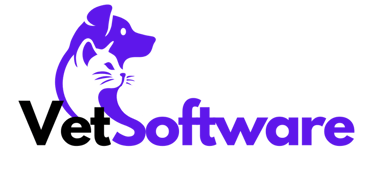
How to Choose the Best Veterinary CMS for Your Clinic in Malaysia
Looking for the right veterinary clinic software in Malaysia? Here’s a practical guide on what to consider when choosing a CMS that fits your clinic’s size, workflow, and goals.


How to Choose the Best Veterinary CMS for Your Clinic in Malaysia
Choosing a Veterinary Clinic Management System (CMS) can feel overwhelming, especially when every platform claims to be all-in-one, easy to use, and built for growth. But the truth is, what works for one clinic in Petaling Jaya might not work for another in Kuching, and what looks great in a demo may not survive the day-to-day realities of a busy front desk.
For Malaysian clinics, the decision comes down to more than just features. Local compliance requirements, clinic size, staffing patterns, and future plans all play a role. Here's what to focus on when choosing a CMS that actually fits your clinic, not just in theory, but in real usage.
Start With the Basics: What Do You Actually Need?
Before diving into comparison tables, it helps to outline your own operations first. Different clinics have different priorities. A solo practitioner may value simplicity, while a multi-location practice might care more about data centralisation and reporting.
Ask yourself:
Do you need full EMR with attachments, or just simple visit notes?
Is inventory tracking important to your workflow?
Will multiple team members be accessing the system at the same time?
Are you planning to grow or open another location in the next 1–2 years?
This exercise helps you separate what’s essential from what’s nice to have. It also gives you a filter to evaluate whether a system is overbuilt, underpowered, or just right.
Local Fit Matters More Than You Think
Even if a system looks polished, it won’t help much if it doesn’t understand how Malaysian clinics operate.
Look for systems that:
Are designed or actively used in Malaysia
Support workflows that reflect local expectations (e.g., walk-ins, shared appointments)
Have support teams in the same time zone or region
Understand local terminology, tax flows, and compliance structures
Many clinics also benefit from bilingual interfaces or team training in both English and BM, depending on staff composition.
While international systems may offer impressive features, they often come with limitations around support, pricing in foreign currency, and misalignment with local workflows.
Look Beyond Feature Lists
Feature checklists can be misleading. Almost every system lists:
Appointment scheduling
Medical records
Billing
Inventory
Reporting
But how those tools work can vary a lot.
For example:
Some systems link medical notes directly to billing, while others require manual duplication
Appointment calendars may or may not support multi-vet views
Stock tracking might be basic, or it could include batch expiry and supplier management
Reporting might mean pre-set templates only, or flexible customisation based on your KPIs
When reviewing a platform, don’t just check whether a feature exists, look at how it’s used. Try to see what everyday tasks look like on that system.
Consider Workflow Friction
A good CMS should make your operations feel smoother, not more complicated. If you find yourself needing a separate Excel sheet to double-check stock, or switching between WhatsApp and the billing page every few minutes, the system isn’t doing its job.
Some platforms help clinics reduce friction by:
Linking appointments, treatments, and invoices together
Automatically pulling product prices into billing
Offering quick views of a pet’s visit history, vaccination dates, or medical notes
Sending automatic reminders to clients ahead of their appointment
Not all systems do this equally well, so it’s worth testing them with real clinic scenarios. Book a test consult, create an invoice, dispense medication, then decide if the flow makes sense for your team.
Don’t Ignore Support and Onboarding
A CMS is not just software, it’s a service relationship. Support responsiveness is a key factor in long-term usability. Some platforms include one-on-one training, quick help via chat or WhatsApp, or on-demand videos and documentation. Others are slower to respond or depend on overseas teams.
Ask during evaluation:
How quickly do you usually respond to clinic support requests?
Is onboarding included in the subscription, or paid separately?
Do you provide local business hours support?
For clinics that have part-time staff, locums, or weekend hours, knowing whether help is available when you need it can make a real difference.
Is the Platform Keeping Up With Malaysia’s Regulatory Roadmap?
By now, every Malaysian clinic is aware of LHDN’s mandatory e-Invoicing rollout. Starting with larger companies in 2024, it will apply to all businesses, including vet clinics, by January 2026.
While not all platforms are ready for this today, most should have a roadmap or some degree of integration with the MyInvois portal.
When evaluating a CMS, ask:
Is e-Invoicing support currently available, or in active development?
Will this be included in my plan, or require an upgrade later?
This matters not just for compliance but also for reducing manual processes once the mandate takes effect.
Think About the Bigger Picture
Some systems offer more than just internal clinic tools. Depending on your goals, it may be worth considering platforms that:
Offer optional booking portals or apps (even if your clinic prefers manual bookings now)
Integrate with insurance providers or pet owner ecosystems
Include tools for retention, such as vaccine reminders or wellness packages
Allow you to scale to multiple branches without duplicating accounts
While these may not be critical from day one, they become useful if your clinic grows, adds staff, or wants to improve client communication later on.
Choosing a CMS That Works For You Long Term
Software adoption isn’t about finding the system with the most features, it’s about finding the one that supports how you work, with the flexibility to grow with you.
In 2025, clinics in Malaysia are choosing platforms that:
Simplify their workflow
Reduce manual admin
Stay aligned with local regulations
Offer support that actually shows up when needed
Whether you’re moving off paper, upgrading from a generic POS, or switching from a platform that no longer fits, the right CMS doesn’t just organise your clinic, it gives your team more time to focus on what really matters.
Making the Right Choice for Your Clinic’s Workflow
Choosing a veterinary CMS isn’t a one-size-fits-all decision. The best system for your clinic will depend on how you operate, how your team works, and what your future plans look like.
Start by identifying your actual needs, then test how real workflows feel in each system. Ask hard questions about support, compliance, and daily usability. If a platform fits your clinic’s rhythm, removes friction, and gives you space to grow, that’s the one worth choosing.
Stay updated with the latest veterinary software trends.
© 2025. All rights reserved.
